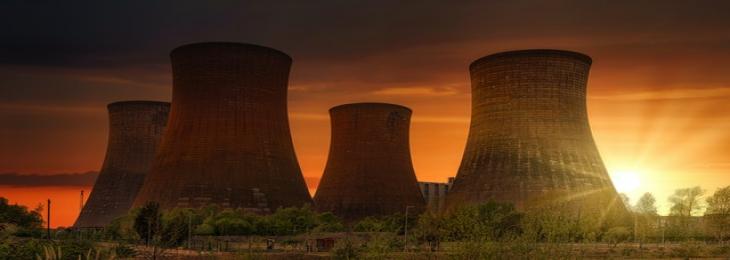
Hydrogen can revolutionize the energy utility and can be used as an alternate source of energy for non-renewable energy resources.
One of the most critical issues of modern era is to recognize and implement a sustainable energy source in place of conventional energy resources. The traditional energy consumption mostly rely on the use of fossil fuels, which are on the verge of extinction within the 21st Century. Combustion of these non-renewable energy resources have a negative impact on environment. Hence, it has become quintessential for the people of this planet to build a sustainable energy to fulfil their daily energy consumption. As a saviour, hydrogen can direct us to the sustainable living. It is the most abundantly found element in nature.
To curb the effects of global warming, governments across the globe are taking co-ordinated initiatives to decarburize their respective economies. At Paris Agreement that was held in December 2016, 116 countries approved to keep the global temperature rise below 2⁰C annually. This agreement included an initiative to reduce the global emission of greenhouse gases by 85% until 2050. Considering the rapid growth in population, this target requires a revolution in global energy consumption to fulfil it. The electricity demand is about to rise more than 140% in the next few decades that will create a challenge for the governments of the world to find a way to reduce greenhouse emission without influencing their energy supplies.
Produced from water and electricity, hydrogen is an engrossing energy carrier which can be easily converted into power without having any effects on surrounding. When hydrogen is combusted in the presence of oxygen, water formations takes place with no emission of pollutants. As a chemical element, hydrogen is the most common element that can be found on Earth, which burns clean. But, hydrogen is not available in its purest form as it needs to be detached from compounds by water electrolysis process.
Characteristics of Hydrogen
Hydrogen is the smallest atom of all as it has only one proton and one electron in its nucleus. With atomic number 1, it is denoted by H. It is 8 times lighter than natural gas. As the lightest element, it weighs around 1.00784 u on average. Hydrogen in liquid form has the lowest density as compared to other liquids. It the only element which is ‘neutron-less’. The boiling point of hydrogen is -252.9⁰C and the melting point is -259.2⁰C. Hydrogen gas has a density of 0.000089 gram/mL, which is lighter than air.
Requirements of Hydrogen Economy
As a synthetic energy carrier, hydrogen can carry energy which is generated by other processes. By electrolysis of water, electrical energy can be converted into hydrogen. Apart From producing hydrogen, the high-grade electrical energy is also used to pressurize, condense, transport, and store the hydrogen. Usually electrical energy can be directly distributed to the consumers. There are alternatives for hydrogen such as hydrocarbons in liquid form and carbon dioxide extracted from flue gases. These elements can act as hydrogen carriers, which is generated from renewal energy resources in electrical conversion. Hydrogen will be accepted as a sustainable substitute only if the cost of hydrogen combustion is minimal. Hydrogen transition is ready to be deployed on the network of grid electricity system as an electricity supplier. Hydrogen will need a distinctive distribution system and the infrastructure that is required for any artificial hydrocarbon. The whole energy supply and grid electrical distribution system will be affected after shifting to hydrogen economy. Before investing in hydrogen economy, all of its aspects should be considered regarding its reliability. Now the question that arises is, what amount of energy and money is required to run the hydrogen economy?
The main aspects of hydrogen economy are its generation, dispatch, transportation, and storage. The energy consumed for these processes can be related to other traditional energy generation, to find out the most economical way of energy production.
Transportation/Supply of Hydrogen
Road transportation plays a vital role in serving hydrogen to remote locations and filling stations when there is high demand. The other options are through the waterways i.e. ships and via pipelines.
Fuel and gas companies such as China Petroleum and Chemical Composition, Saudi Arabian Oil, and Royal Dutch Shell are some of the leading providers of industrial gases in the world. These companies made a comparative analysis of transportation between natural gas and hydrogen, and made the following assumptions:
1. The pressure of hydrogen to be transported should be at 2900.75 psi.
2. Pressure vessels should be mounted on trucks weighing more than 30 tons
3. 88 lbs. of diesel is consumed per 60 miles at full loads
4. Reduced fuel consumption on return run
Transporting liquid hydrogen is expensive due to its limited payload. The truck needs to be maintained and requires legal registration and insurance paper-work before hitting the road. Only 4,629 pounds of liquid hydrogen can be stored in a truck because of the density of liquid.
Another method of transporting hydrogen is through pipelines. The pipelines are also used to transport other chemicals from one production site to another. In pipelines, the pneumatic pumps are mounted equally at a distance to continuously regulate the flow of gases. But practically, these pipelines are not used of transferring hydrogen due to losses occurring at diversions, viscosity of hydrogen, lack of ductility of seals, and lubrication problems.
Applications of Hydrogen
Hydrogen is mainly used by oil refining industry, in methanol, ammonia, and steel production industries. Hydrogen-fueled vehicles are still under-development with engineers working on to reduce the cost of hydrogen generation. Other applications are in power generation and in commercial buildings.
The contribution of power sector in global CO2 emission stands at 40%. With a lower overall cost and reduced CO2 emission, multiple operations can be performed. Installing more hydrogen-based plants, the power sector can be de-carburized, which will enable long-term power storage. In the times of low energy supply such as lack of wind energy, hydrogen-based gas turbines will re-electrify the energy plant to secure the electricity for peak demands. Hydrogen in automobiles will reduce the use of carbon in automotive sector.
More than half of the global carbon emissions come from industrial sector and transportation sector. These sectors are supposed to de-carburize their energy consumption. Conventional renewable resources such as solar, wind, and hydro-power are the best alternatives for these sectors. Initial investment for the renewable resources is high. But the other available alternative is hydrogen, which will not cost much at the installation stage. The combustion and electrolysis of hydrogen might need a decent expenditure but it is far less than the installation of renewable energy resources. Hydrogen can be used directly in its pure form. It can also be combined with other chemicals for the creation of green ammonia and methanol, which are sustainable. The chemicals produced by combustion with hydrogen will be used as an artificial fuel or a fertilizer.
The transportation sector is attracting more attention as the potential first adopter of hydrogen economy. The super-fast trains are poised to replace the diesel-based engines with hydrogen fuel cells. Countries such as Japan, China, and South Korea have witnessed an encouraging growth in vehicles running on hydrogen fuel cells. In these countries, the adoption of hydrogen related fuels is backed by the Government-funded research teams whose sole focus is on implementing the fuel cells in place of batteries. Even the companies which were producing vehicles driven by batteries, are now shifting to fuel cells. The shift of these companies was obvious due to increase in challenges and limitations of producing battery-driven vehicles.
The green hydrogen is expected to be priced higher as compared to other members such as grey and blue hydrogen. Grid electricity system is likely to get replaced by the hydrogen-production plants for electricity distribution. With renewable resources such as wind power plants and solar power plants having a decline in their costs, the electrolytic hydrogen is finding a lot of interest among world’s several economies. For the long-term, hydrogen will make its place in the world as a renewable source of energy. Its adoption will widely depend on its effect on environment and scale required for its production.
There are various sources of hydrogen on Earth but those are in compound form and need to be extracted. This extraction will need some expenditure as it is required to extract other chemicals.
Hydrogen provides wide range of advantages in industrial, transport, commercial, and residential sectors by decarburizing each of them. Being a clean energy carrier, hydrogen has low-carbon content and has the ability to transit a cost-effective and clean energy system. While several industries have introduced fuel cell system in the market, hydrogen has a potential role in the grid system. This will require a sustainable hydrogen production, a distribution system, and the storage in bulk. Along with an extensive support from governments and collaboration within industries, we can utilize the potential of hydrogen across all the sectors.






